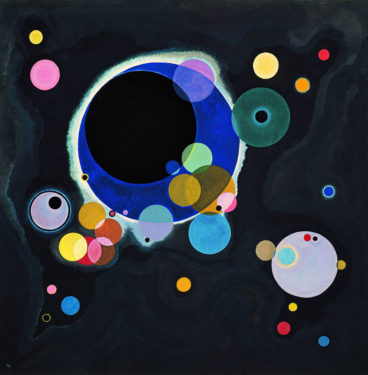Jewelry and fine art paintings are two of my favorite things in the world. At M.S. Rau, we have the opportunity to closely study both art forms daily, and I often observe similarities between the two. Certain jewelry pieces take their inspiration directly from works of art, whereas sometimes the similarities are purely coincidental. Regardless of the cause, these connections excite me! I’ve chosen a selection for your enjoyment below.
This amazing 16th-Century portrait by German Renaissance master Cranach the Elder depicts Frederick the Wise, who ruled as Elector of Saxony (one of the states of the Holy Roman Empire) from 1486 to 1525. Frederick is remembered and celebrated for having protected Martin Luther under the auspices of the rule of law and religious freedom, in spite of the fact that the Elector practiced Roman Catholicism for the majority of his life.
As with most portraits of the period, Cranach the Elder’s suggests the Elector’s political influence and wealth. In addition to his fur overcoat, Frederick sports a golden ring with a blue gemstone featured prominently on his right pointer finger. I was amazed to notice that the design of the ring in the painting almost identically resembles this men’s star sapphire ring from our collection. This connection really solidifies the concept of “timeless design” — making the ring all the more desirable!

So distinct in its stylistic attributes, the Art Nouveau is celebrated across art and design. Within the graphic arts, Czech illustrator Alphonse Mucha produced a prolific body of work that is widely recognized. It is Mucha’s imagery that many of us conjure in our heads when picturing Art Nouveau. Here is a work that is typical of the artist’s oeuvre and whose subject matter, a personification of autumn, represents a theme he adored: the four seasons.
The jewelry of the era employed much of the same iconography, particularly flora the female figure.
In their respected book Understanding Jewelery, D. Bennett and D. Mascetti write, “Art nouveau made the woman’s profile, and the naked, sensuous female body, its emblems, and the fin de siècle woman, now conscious of her new position in society and of her femininity, wore such jewels with enthusiasm.”
Here, you’ll see a gold and enamel pendant by French goldsmith and jeweler Jules Brateau that embodies the aesthetic of the period and shares similarities with Alphonse Mucha’s prints. Instead of a season, the pendant depicts Ceres, the Roman goddess of fertility and agriculture. Like autumn, she wears a flowing garment and is surrounded by flowers (as well as a pair of putto). And like Mucha, Brateau was highly praised in his day: He was admitted to the Légion d'Honneur in 1894 and was appointed as a juror at the Universal Exposition of 1900.
British painter Arthur John Elsley is remembered most for two subjects: children and animals. This large-scale painting showcases both, with its subjects delightfully interacting with one another. The Victorian and Edwardian-era painter took advantage of Queen Victoria’s — and hence the British public’s — love for animals, which made them a popular subject. Never Mind includes three darling kittens in the foreground, which is why I cannot resist associating it with the playful Diamond Cat Brooch.

The brooch features 4.60 carats of white diamonds highlighted by ruby eyes and a pearl “toy.” The brooch dates to the Victorian era when the Kingdom experienced a period of progress and affluence. The whimsy and romanticism of the era, along with new access to wealth, encouraged a surge in the production and trade of jewelry that is still collected today!

Wassily Kandinsky is often considered to be the very first of the Abstract painters, meaning his work lacks representational aspects. Several Circles dates to the period between the First and Second World Wars in Weimar, Germany where the artist taught at the famed Bauhaus School. The painting examines the relationship between color, form and space. Kandinsky stated that, “The circle is the synthesis of the greatest oppositions. It combines the concentric and the eccentric in a single form and in equilibrium. Of the three primary forms, it points most clearly to the fourth dimension” (Guggenheim).
Kandinsky’s understanding of circles is far more esoteric than your average person.
That being said, circles do make visual impact within any design context. The beloved jewelry house Chopard has taken advantage of that impact in their “Happy Spirit” diamond earrings. The concentric circles that comprise these earrings float within a transparent layer, allowing them to rotate and move about when worn. The earrings’ movement makes them not only eye-catching but is also reminiscent of Kandinsky’s dynamic masterpiece.

This exceptional stone from our collection demonstrates a rare “watermelon” tourmaline with a fade of color that changes from green to pink. With its gradient, the stone recalls the work of the famed Modern American painter Mark Rothko. Rothko was a key member of the Color Field painting movement, a name that could easily be lent to bi-color tourmalines.








